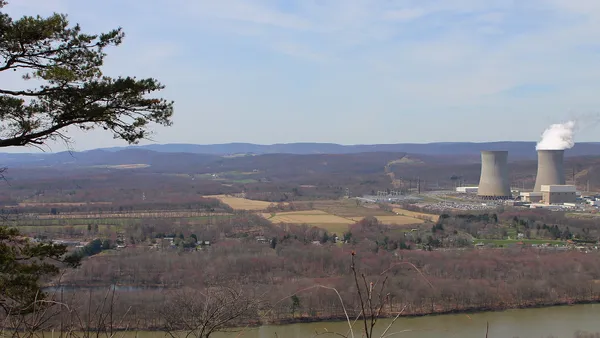Dive Brief:
- Power outages earlier this month due to Hurricane Matthew peaked at 2.5 million customers across all customer classes in five states, according to the U.S. Energy Information Agency's analysis of the storm's impacts.
- Outages peaked on Oct. 9 as the storm reached South Carolina. EIA said that in absolute terms, Florida sustained the largest peak outages, at almost 1 million; in South Carolina outages peaked at more than 800,000 customers, representing a third of the state’s customers.
- The Category 3 hurricane also forced several nuclear plants offline and temporarily spiked outage rates above historical norms, but EIA said that capacity has now been restored.
Dive Insight:
Though it didn't register a direct hit and was downgraded as it came ashore, Hurricane Matthew left millions of customers without power and forced the shutoff of several nuclear plants as it marched up the eastern seaboard for six days.
Florida and South Carolina were hit hardest, with 10% of the Sunshine State losing power at one point. Outages peaked at 7% each in Georgia and Virginia, and 14% in North Carolina.
Nuclear plants operate under particular safety guidelines in storms, and Matthew impacted their operations as well.
One nuclear unit at the St. Lucie nuclear plant on Florida’s east coast powered down in anticipation of the storm; a second unit was already down for refueling. Robinson Steam Electric Plant in South Carolina and the St. Lucie plant both issued a Notification of Unusual Event, whch EIA said is "the lowest risk level a facility can enter into."
Nuclear plants are required to shut down at least two hours before hurricane winds arrive. The plants must also shut down if they lose offsite power.
EIA said both Robinson and the Harris Nuclear Plant in North Carolina temporarily lost offsite power, though Harris was already offline. Restarting requires inspection by the Federal Emergency Management Agency.
EIA also said the outages had little impact as the plant shutdowns "occurred during a time of seasonally low electricity demand ... Nationally, nuclear outages were briefly higher than the previous five-year range for that period immediately after the storm, but they have since returned to typical outage levels."
The storm was billed as a test for the Southeast's grid infrastructure, particularly in Florida where utilities have made significant resiliency investments since the last major hurricane hit the state in 2005. After the storm, Florida Power & Light credited its rollout of 4.8 million smart meters in the last decade for helping it restore 70% of its 1.2 million customers without power within 24 hours.
That Florida escaped major flooding helped FPL's efforts, but sections of the Carolinas were not so lucky. Duke Energy said last week it will have to rebuild some parts of its grid in the states after storm damage exceeded projections.















